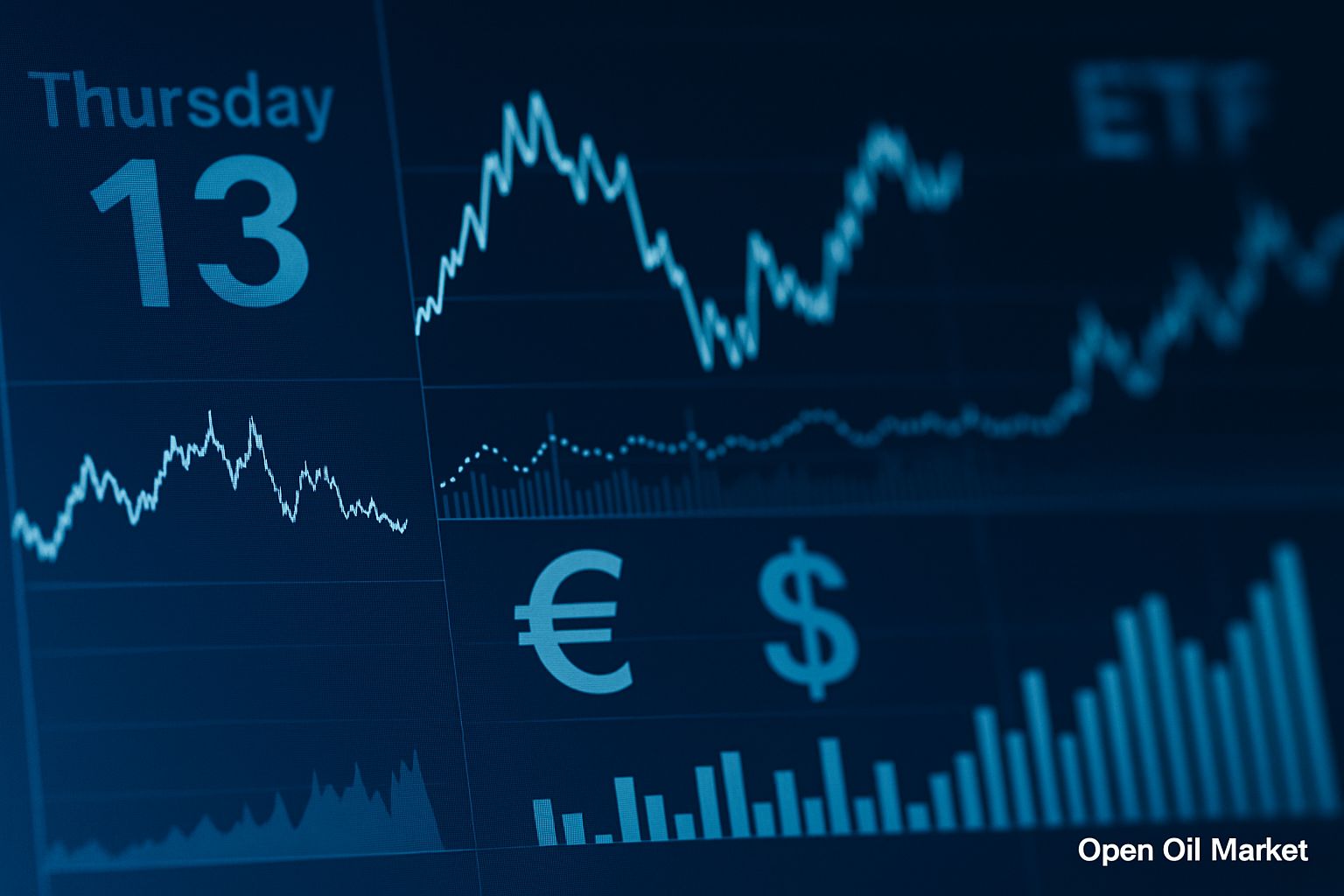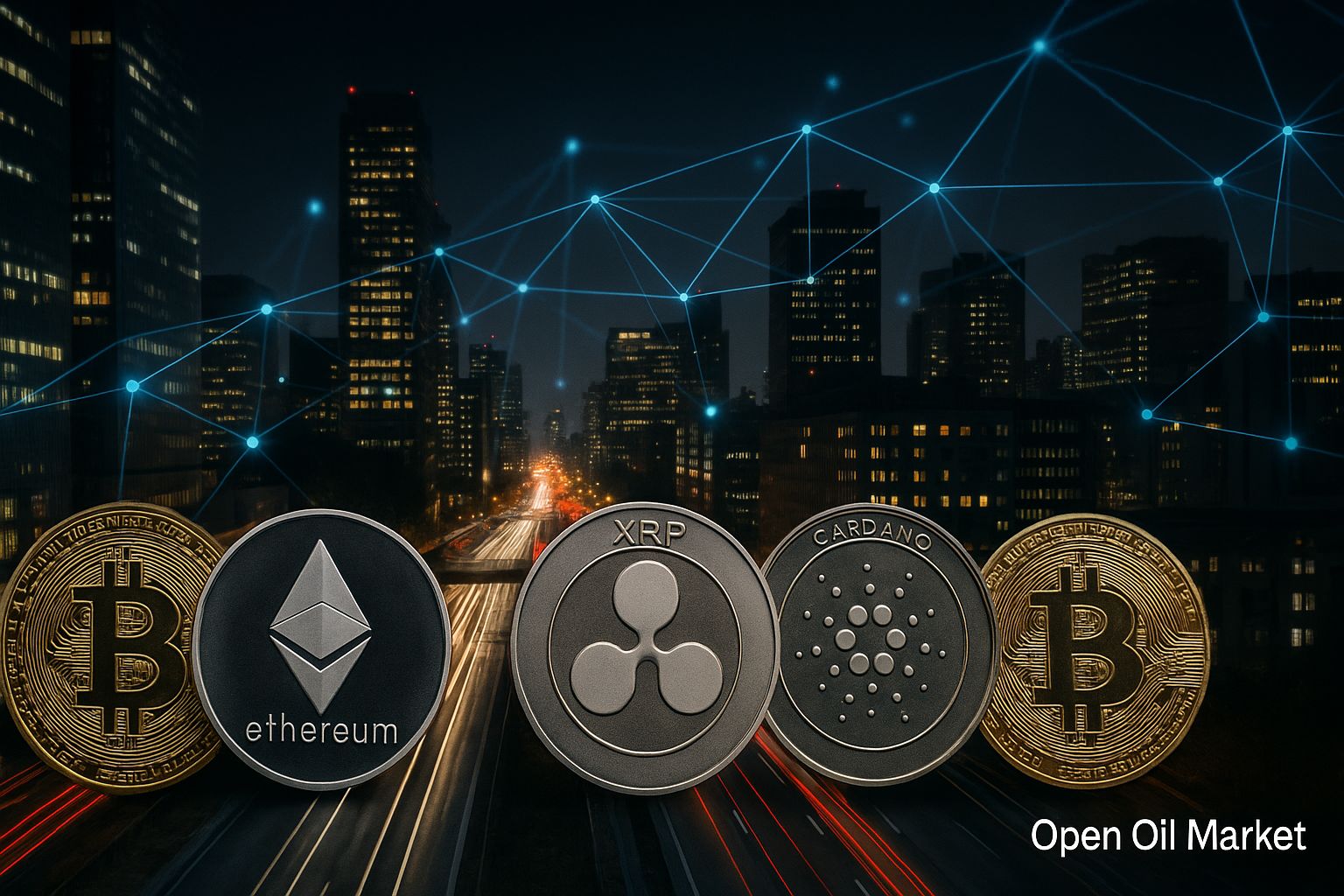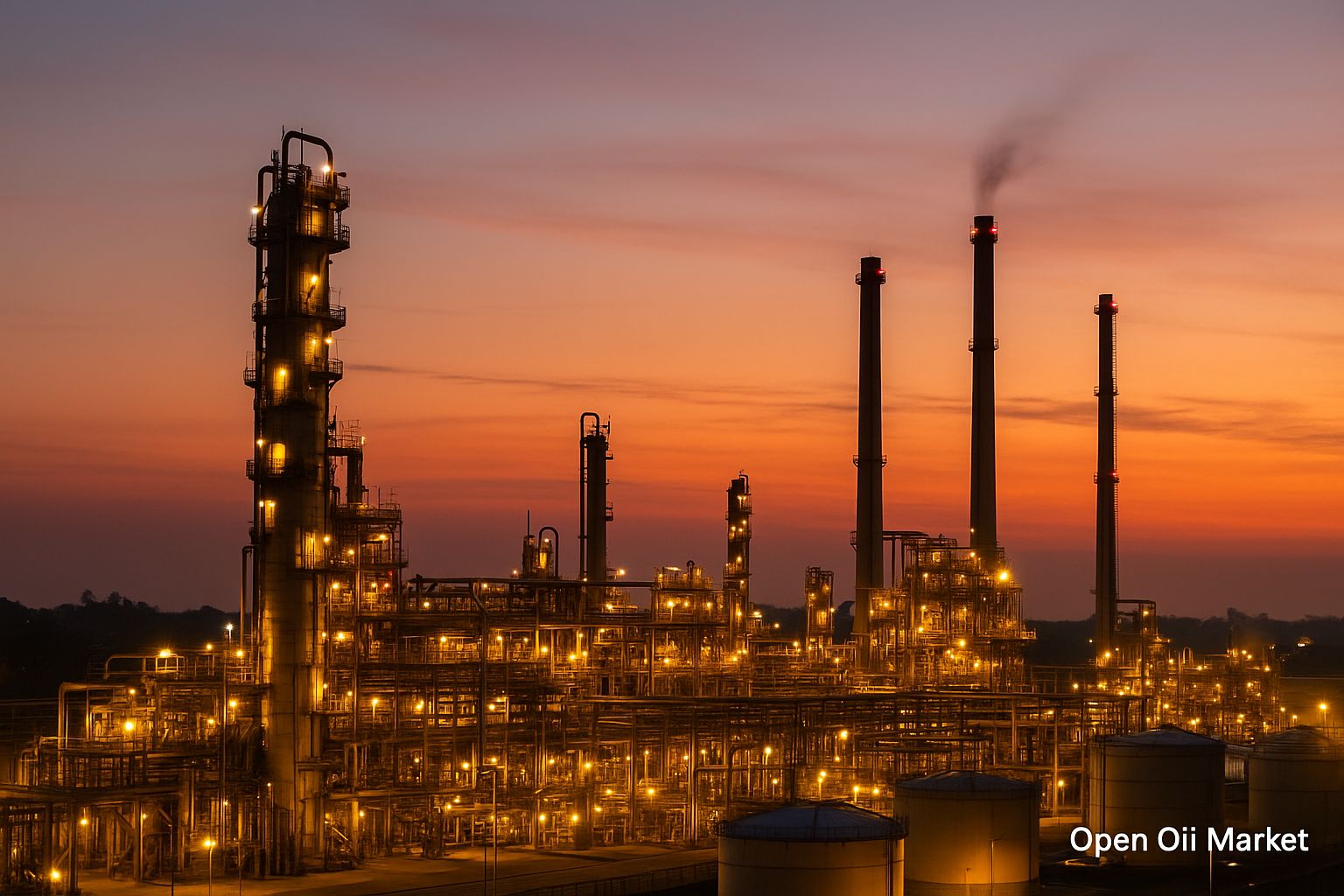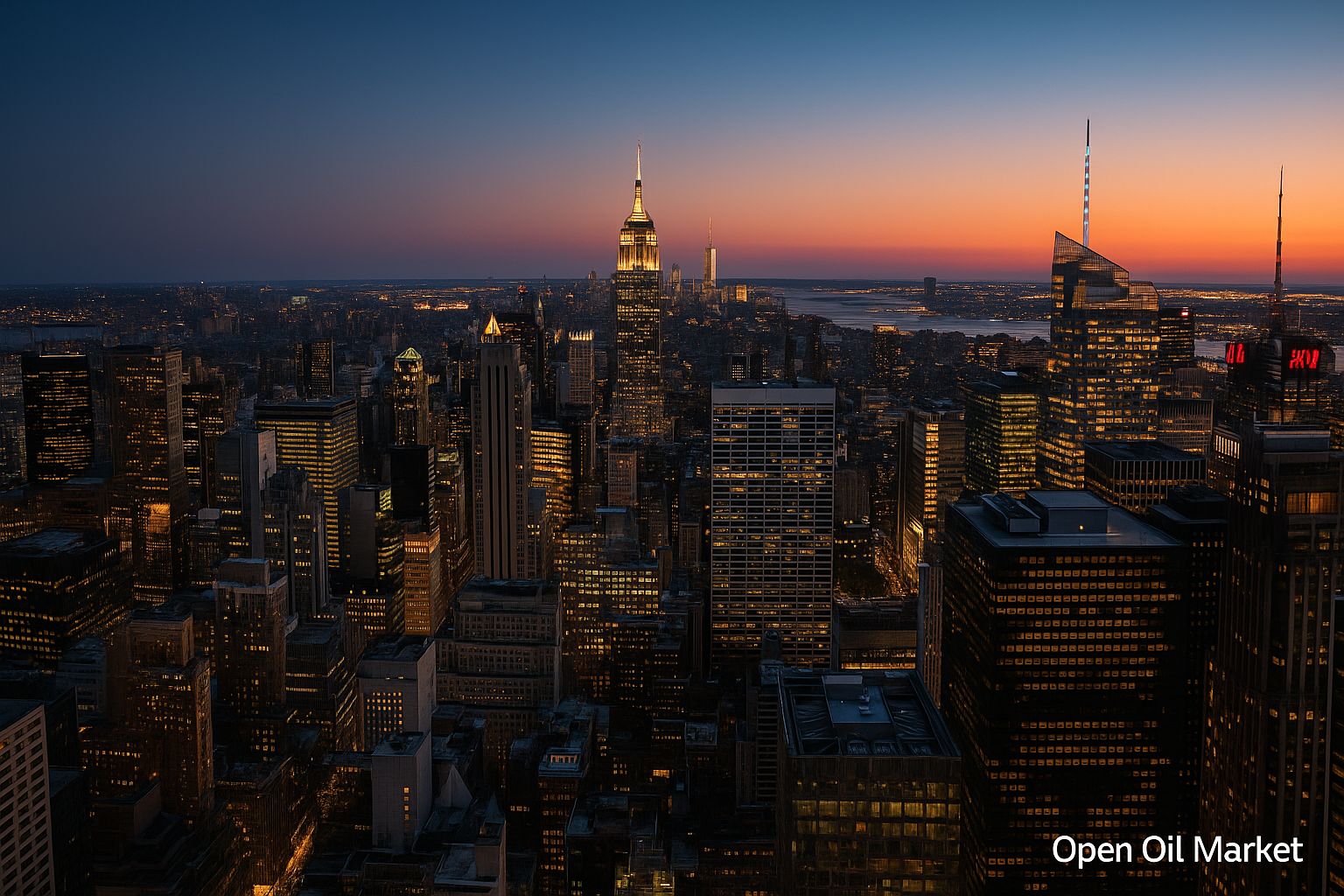
Global News from the Fuel and Energy Sector as of 22 October 2025: Brent Oil Around $60, Stabilisation of the Russian Fuel Market, Record Gas Reserves in Europe, and Growth in Renewable Energy Investments. An Analysis of Key Trends in the Fuel and Energy Sector for Investors and Companies.
As of 22 October 2025, the global fuel and energy sector continues to witness a combination of intense geopolitical confrontation and relative stability in commodity markets. The sanctions standoff between Russia and the West remains unyielding, with Western nations intensifying restrictions. Last week, the UK imposed new sanctions on leading Russian oil and gas companies, and the European Union approved a phased ban on the import of Russian gas by 2026. An unexpected factor has emerged in India's position—under pressure from partners, New Delhi has expressed its readiness to gradually reduce Russian oil imports, which could redistribute global oil flows in the long run.
Meanwhile, commodity markets are exhibiting a moderately calm dynamic. Oil prices remain near multi-month lows due to an expected supply surplus by the end of the year: Brent hovers around $60 per barrel, while WTI trades between $56 and $58, approximately 10% cheaper than a month ago. The gas market is entering winter with record fuel reserves in Europe, providing a comfortable backdrop for consumers (unless extreme cold disrupts the situation). The global energy transition continues to accelerate: investments in renewable energy are reaching new heights, although traditional resources—oil, gas, and coal—remain the backbone of energy supply.
In Russia, emergency measures to stabilise the internal fuel market are yielding results. The fuel deficit is gradually being resolved, with wholesale prices receding from peak levels, though remote regions still require attention. At the international forum "Russian Energy Week 2025" (Moscow, 15-17 October), one of the main topics was ensuring the internal market's energy resources and reorienting exports under new sanctions conditions. Below is an overview of the current events and trends in the oil, gas, electricity, coal, and other segments of the fuel and energy sector as of today.
Oil Market: Oversupply and Sanction Risks
Global oil prices are at their lowest levels since early summer. After a brief rally in September, the market turned downward again, with Brent falling towards the psychological threshold of $60 per barrel. Fundamental factors indicate a growing oversupply of crude, although geopolitical tensions prevent prices from dropping too significantly.
- Production is rising, demand is slowing. OPEC+ countries and other producers are increasing output, while global demand growth is slowing. The oil alliance will raise the total quota by approximately +130,000 barrels per day from November, while production in the US and Brazil is approaching record highs. The International Energy Agency has lowered its forecast for oil demand growth in 2025 to around 0.7 million barrels per day, compared to over 2 million barrels per day in 2023. The slowdown in the economies of Europe and China, the impact of previous high prices, and trade tensions (renewed tariff disputes between the US and China) are restraining consumption growth. As a result, global commercial oil inventories are increasing, adding pressure to prices.
- Sanctions and new risks. Strengthening sanctions against Russia maintains uncertainty in the market. Discussions are underway regarding a complete embargo on Russian oil and curbing "shadow" exports through the tanker fleet. Simultaneously, India— a key buyer of Russian oil—may reduce imports from Russia under Western influence. The loss of the Indian market significantly increases pressure on Russian exports, although global supplies are likely to adjust through other sources. Consequently, Brent's level around $60 serves as a kind of market "floor": the oversupply does not allow prices to rise, yet geopolitical risks prevent significant declines below this threshold.
Thus, the oil market is balancing between the pressures of fundamental factors and political threats. Excess supply keeps prices low, but the sanctions standoff and possible market shifts (such as India's withdrawal from Russian supplies) prevent prices from falling deeper. In the coming months, a continuation of relatively low oil prices is expected, unless new shocks occur.
Natural Gas: Record Reserves and Eastern Reorientation
The gas market enters the winter season in a favourable position. European countries have accumulated record volumes of gas, and Russia is reorienting its exports eastward after losing the European direction. Consequently, gas prices remain relatively low, although stability will largely depend on weather conditions this winter.
- Europe is ready for winter. Gas storage facilities in the European Union are over 95% full—5-7 percentage points higher than a year ago. A warm autumn and high levels of liquefied natural gas (LNG) imports have allowed Europeans to create a substantial fuel reserve without frantic purchases. Wholesale gas prices have stabilised around €30-35 per MWh, significantly lower than the peak values of autumn 2022. The risk of a repeat of last year's supply crisis has been substantially reduced, although much depends on how cold this winter turns out to be and whether there will be interruptions in LNG supplies.
- Exporting East. Russia, having lost much of its European market, is increasing gas supplies towards Asia. Export volumes via the "Power of Siberia" gas pipeline to China have reached record levels (expected around 22 billion cubic metres in 2025), and the construction of a second line through Mongolia ("Power of Siberia 2") is under discussion to partially replace lost volumes. Additionally, new LNG processing capacities in Yamal and the Far East have been commissioned, and extra batches of Russian LNG are being directed to India, China, Bangladesh, and other Asian countries at competitive prices. Nevertheless, Russia's total gas exports remain below pre-sanction levels—currently, ensuring the internal market and meeting the needs of CIS allies is the priority for Russian authorities.
Overall, the global gas sector enters winter with a significant cushion. The European market possesses an unprecedented "buffer" for colder weather, and global gas flows have already adjusted to new realities: the EU has virtually abandoned Russian gas, while Russia has significantly strengthened its position in Asia. Unless extreme weather anomalies or other unforeseen circumstances occur, gas prices this winter are likely to remain comfortable for consumers.
Electric Power: Rising Consumption and Network Modernisation
Global electricity consumption in 2025 is firmly moving towards a historic high, surpassing 30,000 TWh of generation for the year. Major economies—including the USA and China—are demonstrating record electricity production, while many developing countries in Asia, Africa, and the Middle East see rapidly growing demand driven by industrialisation and population growth. This surge in consumption presents new challenges for energy infrastructure.
- Network pressure. Increasing electricity consumption necessitates extensive modernisation of electricity grids and generation capacity. In the USA, energy companies are investing billions of dollars in upgrading distribution networks, considering the growing load from data centres and electric vehicles. Similar energy network enhancement programmes are being implemented across Europe, China, India, and other countries. Concurrently, "smart" grids and energy storage systems are being deployed: industrial battery farms and pumped-storage hydroelectric stations help smooth peak loads and integrate intermittent renewable generation. Without forward-looking investments in infrastructure, energy systems will struggle to reliably meet demand and avoid outages.
Overall, the power sector continues to fulfil the task of supplying the economy with energy, even at record consumption levels. However, continuous investment in networks, generating capacity, and innovations is required to maintain the reliability of energy systems. Many countries view the electricity sector as a strategic industry and are ramping up investments in its development—after all, the stability of power supply is crucial to the functioning of all other sectors of the economy.
Renewable Energy: Investment Boom and Growth Challenges
The renewable sector continues to accelerate, bolstering the global trend of the "green" transition. In 2025, a record number of new solar and wind power plants are expected to be commissioned, driven by large-scale government incentives in leading economies. Simultaneously, the rapid growth of renewable energy is accompanied by a number of challenges, while traditional energy resources still underpin global energy supply.
- Record generation and renewable share. By 2025, about 30% of the world's electricity is expected to be generated from renewable sources—an unprecedented share. In the EU, net generation already exceeds 45% of the energy balance, while in China it approaches 30%. For the first time, global electricity generation from solar and wind sources has surpassed coal generation, marking a significant milestone for the industry.
- Government support and incentives. Governments are actively encouraging the development of renewable energy. In Europe, stricter climate targets are being adopted, requiring accelerated deployment of clean capacity and the expansion of emissions trading schemes. In the USA, a large subsidy and tax credit package for "green" energy and related sectors is being implemented (initiatives under the Inflation Reduction Act). In CIS countries, renewable energy projects are also advancing: Russia and Kazakhstan are conducting competitions for the construction of solar and wind parks with state support, while Uzbekistan is building large solar farms in desert areas. Such measures reduce industry costs and attract investments, accelerating the transition to clean energy.
- Growth challenges. The rapid growth of renewable energy is accompanied by problems. The high demand for equipment and raw materials is leading to increased costs for components: polysilicon for solar panels, rare earth metals for turbines and batteries remain expensive. Energy systems face the challenge of integrating intermittent generation—new energy storage solutions and backup capacity are required to balance the grid. In some regions, there is a shortage of qualified personnel and inadequate grid capacity to accommodate new renewable energy installations. Regulators and companies must address these issues to maintain high rates of the "green" transition without compromising the reliability of energy supply.
Despite the challenges, renewable energy is attracting vast investments and has become an integral part of the global energy balance. As technologies become cheaper, the share of clean energy will continue to grow, while innovations (such as more efficient batteries and hydrogen technologies) open new opportunities for the sector. For investors, renewable energy remains one of the most dynamic segments, although when implementing projects, it is vital to consider market risks associated with regulations, material supplies, and infrastructure constraints.
Coal Market: High Asian Demand and Global Coal Phase-out
In 2025, the global coal industry is demonstrating opposing trends. In Asia, there remains heightened demand for coal for electricity generation during peak periods, while developed countries are accelerating their exit from this fuel for environmental reasons. This summer, East Asia experienced a surge in coal imports: for instance, in August, China, Japan, and South Korea collectively imported nearly 20% more coal than in July. This was triggered by rising energy consumption during a heatwave and temporary production cuts at some mines (in China, safety inspections halted operations at several enterprises).
- Asian coal demand. Asian countries continue to actively use coal to meet the growing demand for electricity. Thanks to coal, many economies in the region have managed to avoid blackouts and ensure the uninterrupted operation of their energy systems during peak months. The high demand also supports prices: energy coal quotes in Australia (Newcastle grade) surged above $110 per tonne in late summer—the highest in the last five months.
- Climate policies and declining demand. In the rest of the world, the role of coal is steadily declining. In the EU, the share of coal generation has fallen below 10% (down from around 15% a few years ago), and 11 EU countries plan to close all coal-fired power plants by 2030, replacing them with gas and renewable capacities. In the USA, cheap natural gas and the growth of renewables are pushing coal out of the energy sector, despite some supportive measures for the coal industry. Even countries historically dependent on coal are cutting back its use: Germany, after temporarily increasing coal consumption in 2022-2023, reduced production at coal-fired power plants again in 2025. Global coal prices are on average significantly lower than last year's levels—in the first half of 2025, export quotes plummeted by 25-30%, reflecting weakened demand outside Asia.
- Russian exports and adaptation. Russia, one of the top three coal exporters, has redirected supplies from Europe to the Asia-Pacific region following the EU embargo in 2022. Currently, more than 75% of Russian coal exports go to China, India, Turkey, and other countries in the region. Eastern markets partially compensate for the loss of Europe, but long-distance trade necessitates offering discounts to buyers and increases transportation costs. In the future, as the world phases out coal, Russian coal mining companies will need to adapt—seeking new buyers, developing deep processing of coal, or focusing on domestic projects (such as "clean coal" for supplying energy to industrial clusters). Only efficiency improvements and flexibility will enable them to maintain competitiveness.
Thus, the coal sector is experiencing a kind of "swan song": in the short term, coal is in demand and can yield profits in Asian markets, but the long-term trend undoubtedly points towards a declining role for this fuel. Investors and companies must navigate this contradictory market: on one hand, in the coming years, coal will still generate revenue, while on the other, new projects come with the risk of losing markets by the 2030s to 2040s. The focus should be on diversification strategies, cost control, and government policies to ease the socio-economic impacts of the coal sector's decline.
The Russian Fuel Market: Stabilisation and Stringent Control
By autumn 2025, the situation in the Russian petroleum products market has noticeably improved compared to the critical situation in September. Following a gasoline deficit in several regions and price surges, authorities rapidly implemented a set of measures that began to yield results. By mid-October, the bulk of the fuel shortages had been addressed: wholesale gasoline and diesel prices receded from peak levels, and independent filling stations resumed full operations in nearly all regions of the Russian Federation. However, the most remote areas from oil depots still face challenges, prompting the government to maintain strict oversight and extend regulation.
- Export banned, prices controlled. The complete export ban on automotive gasoline, introduced at the end of September, has been extended until 31 December 2025. Restrictions on diesel fuel exports are also in place: independent traders still do not export, while for oil companies with refineries, exports are permitted only in strictly limited volumes. The government has also maintained a damping mechanism to support refineries—they continue to receive compensation for supplies to the domestic market, providing a financial incentive to redirect gasoline and diesel to filling stations within the country. In addition, to quickly saturate the market, the authorities have eliminated import duties on gasoline and diesel fuel until mid-2026, easing potential imports from friendly countries (for example, from Belarusian refineries). Monitoring of fuel prices at filling stations has been intensified: the Federal Antimonopoly Service has issued warnings to several filling station chains for unjustified price hikes. The government is trying to avoid direct administrative price freezes, betting instead on market mechanisms and targeted measures—such as specific subsidies for fuel carriers in remote regions and the continuation of the damping mechanism.
The measures taken are already producing effects. The daily output of gasoline and diesel in the country has returned to pre-crisis levels thanks to the conclusion of unscheduled repairs at refineries and the redirection of some export volumes to the domestic market. In central and southern regions, filling stations are once again sufficiently supplied with fuel. Authorities hope to navigate the upcoming winter without significant supply disruptions, but they remain in a state of heightened preparedness—additional steps will follow at the first signs of a new scarcity. Strategically, the question of modernising the sector is pressing: there is a need to develop fuel storage and delivery infrastructure, implement digital platforms for transparent resource allocation, and enhance oil refining depth within the country. These areas were discussed at the REN-2025 forum—it is evident that emergency measures alone are inadequate for the long-term sustainability of the market; a comprehensive transformation of the fuel sector is necessary.
Forecasts and Perspectives: Cautious Optimism Ahead of Winter
The global energy sector approaches the end of 2025 in a state of active adaptation to new realities. The ongoing confrontation between Russia and the Western nations is restructuring global trade in energy resources: oil and gas flows are being redistributed, and sanctions pressure is forcing the search for alternative routes and partners. Companies in the fuel and energy sector aim to minimise risks by reorienting exports to Asian markets, enhancing their own raw material processing, and practising price hedging. Concurrently, the global energy transition is gaining momentum: record investments in renewable energy and energy efficiency are shaping the long-term configuration of the sector, where "green" generation is playing an increasingly significant role.
The immediate challenge for the markets is to successfully navigate the winter months. Europe faces a test of enduring cold, and the key question remains: will it be able to maintain a balance of gas during potential abnormal frosts without reverting to fuel imports from Russia? For Russia, the primary exam will be the stable provision of its domestic fuel market: the measures applied must prevent a resurgence of shortages during winter. Global risks remain—ranging from geopolitical conflicts (the tense situation in the Middle East, the ongoing conflict in Ukraine) to emergencies such as technological disasters or natural calamities, which could impact energy infrastructure.
The recent "Russian Energy Week 2025" forum in Moscow, held under the theme "Creating the Energy of the Future Together," provided an important platform for experience sharing and solution-seeking. At REN-2025, particular attention was given to ensuring the internal market's energy resources and exploring Russia's export potential in the new conditions. A dialogue between "Russia and OPEC" was held alongside meetings with delegations from Asian and African nations. Over a dozen cooperation agreements were signed on the forum’s sidelines—ranging from projects for modernising electric grids to advancing renewables and programmes for import substitution of equipment for the oil and gas sector. These agreements lay the groundwork for future investments and reforms. Russian leadership has reiterated its commitment to strengthening the country's position in global energy markets while ensuring reliable energy supply for its own economy.
As the new year approaches, investors and participants in the fuel and energy sector look to the future with cautious optimism. The industry displays remarkable resilience in the face of unprecedented challenges—whether sanctions, logistics restructuring, or technological changes. Adaptation is ongoing, and 2025 has emerged as a time of significant shifts in energy. The pressing question remains regarding the success of the global fuel and energy sector in overcoming winter challenges and maintaining the balance of interests during this difficult phase. One thing is clear: the global fuel and energy complex is moving towards a new level of interaction and innovation, and its key players are ready for changes—investing in the future and strengthening cooperation on the international stage.




